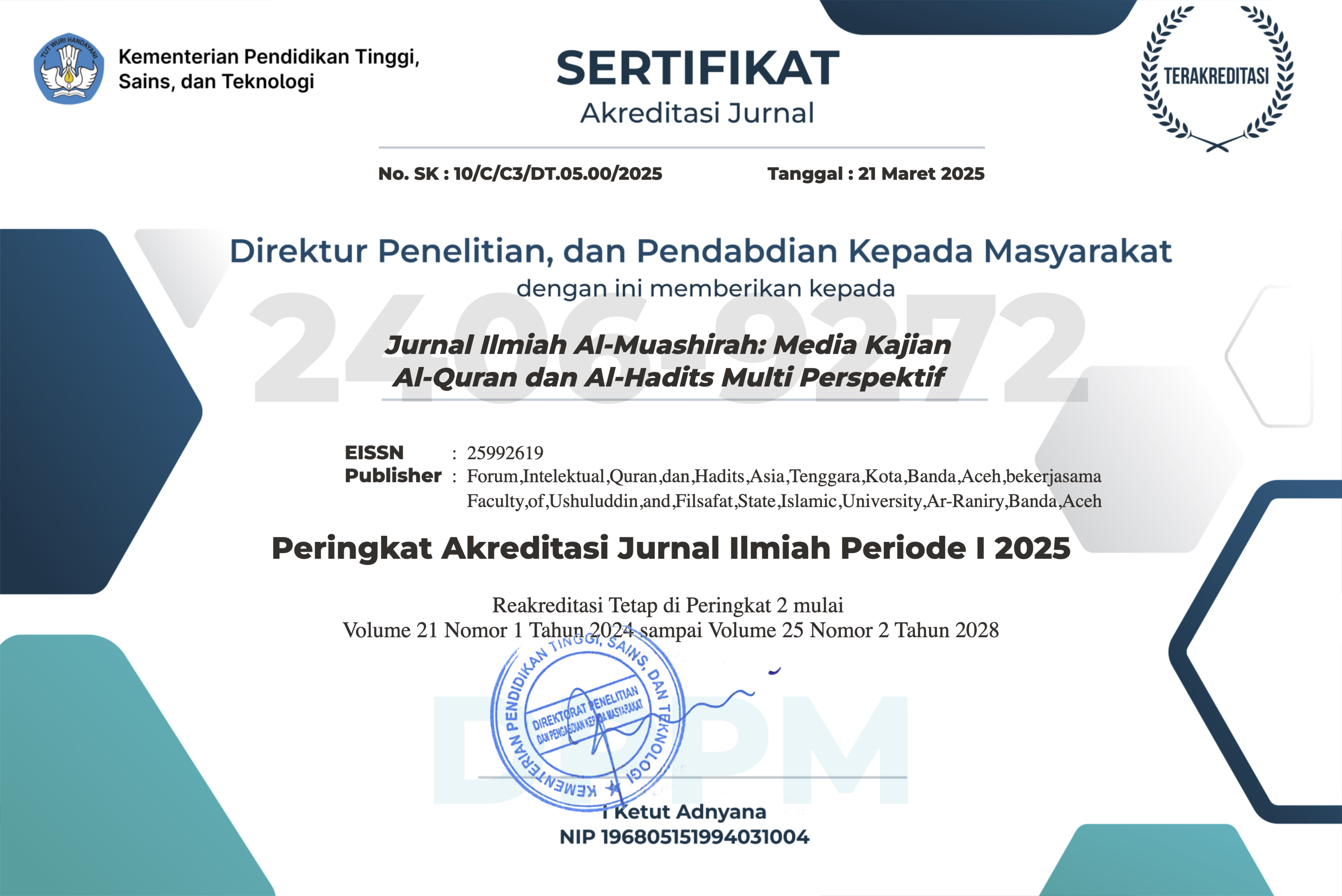Al-Quran, Thibaq, Muqabalah
DOI:
https://doi.org/10.22373/jim.v17i1.7904Keywords:
Al-Quran, Thibaq, MuqabalahAbstract
The Koran was revealed in Arabic. This has been emphasized by Allah Ta`ala himself by mentioning the arabiyyan quranan. From that, the Arabic language used by Allah in Al-Quan must be understood and believed to have its own specialties over other languages in the world. In studies related to various branches of Arabic, there are various terms, including thibaq and muqabalah. These two terms are known in the study of the Balaghah wa bil branch of science specifically badi` science. Although these two terms are both related to the beauty of meaning or tahsin of meaning, thibaq and muqabalah also have differences, thibaq is more about the gathering of two opposing things, whereas muqabalah can be in the form of collecting more than two opposing meanings and it can also be other than that. . Because the Al-Quran is in Arabic, of course it is not silent from the two things that are part of the meaning of the tahsin, especially since the Koran is the holy Kalam whose beauty exceeds the beauty of the language used by Arabic linguists throughout the ages. The meaning of tahsin in the form of thibaq and muqabalah in the Koran is quite widely scattered in various letters and verses. This is certainly not a coincidence, but a clear proof that the Koran has the advantage of a language style which is quite beautiful and interesting.
Downloads
References
Ahmad al-Hasyimi, Jawahir al-Balaghah, Dar al-Kutub al-Arabiyah, Indonesia, 1960.
Ali Jarim dan Musgthafa Amin, Al-Balaghah al-Wadhihah, Dar al-Ma`arif, tt.
Badruddin Muhammad bin Abdullah al-Zarkasyi, Al-Burhan Fi Ulum al-Quran, Dar al-Hadis, Cairo, 2006.
Jalaluddin Abd al-Rahman al-Suyuthi, Al-Itqan Fi `Ulum al-Quran, juz 3,
Maktabah Taufiqiyah, Mesir, tt.
John L.Esposito, Islam Aktual, terj. Norma Arbi`a Juli Setiwan, Inisiasi Press, Depok, 2005.
Muhammad Al-Ghazali, Berdialog dengan Al-Quran, terj. Masykur Hakim dan Ubaidillah, Mizan, Bandung, 1999.
Muhammad Ali al-Shabuni, Shafwatu al-Tafasir, 1,2,3, Dar al-Shabuni, Cairo, 1976,
Moh. Matsna HS, Kajian Semantik Arab Klasik dan Kontemporer, Prenadamedia Group, Jakarta, 2016.
Muhammad Sya`ban `Ulwan dan Nu`man Sya`ban `Ulwan, Min Balaghah al-Quran, Cairo, 1998.
Downloads
Published
Issue
Section
License
Authors who publish in Jurnal Ilmiah Al-Mu'ashirah agree to the following terms:
- Authors retain copyright and grant the journal right of first publication with the work simultaneously licensed under a Attribution-ShareAlike 4.0 International (CC BY-SA 4.0) License that allows others to share the work with an acknowledgment of the work's authorship and initial publication in this journal.
- Authors are able to enter into separate, additional contractual arrangements for the non-exclusive distribution of the journal's published version of the work (e.g., post it to an institutional repository or publish it in a book), with an acknowledgment of its initial publication in this journal.
- Authors are permitted and encouraged to post their work online (e.g., in institutional repositories or on their website) prior to and during the submission process, as it can lead to productive exchanges, as well as earlier and greater citation of published work (See The Effect of Open Access).













